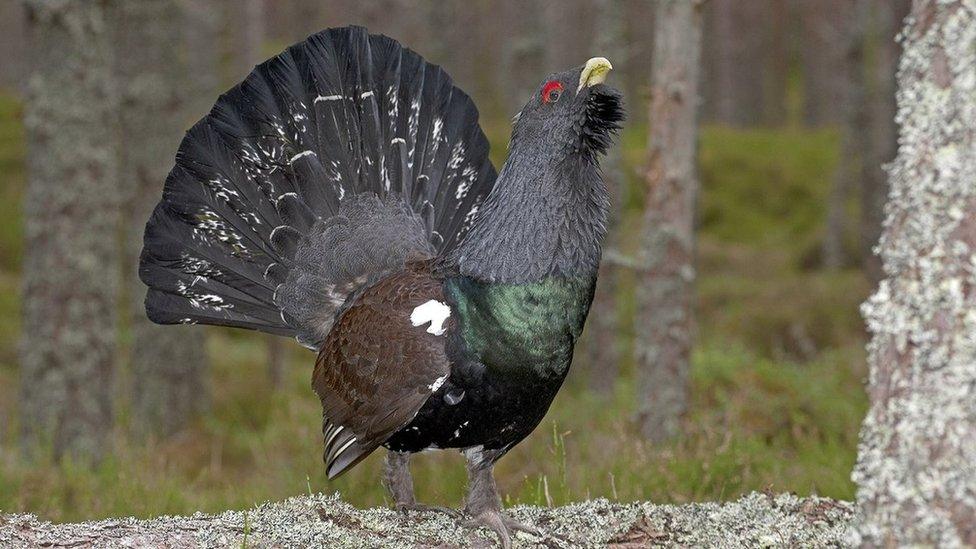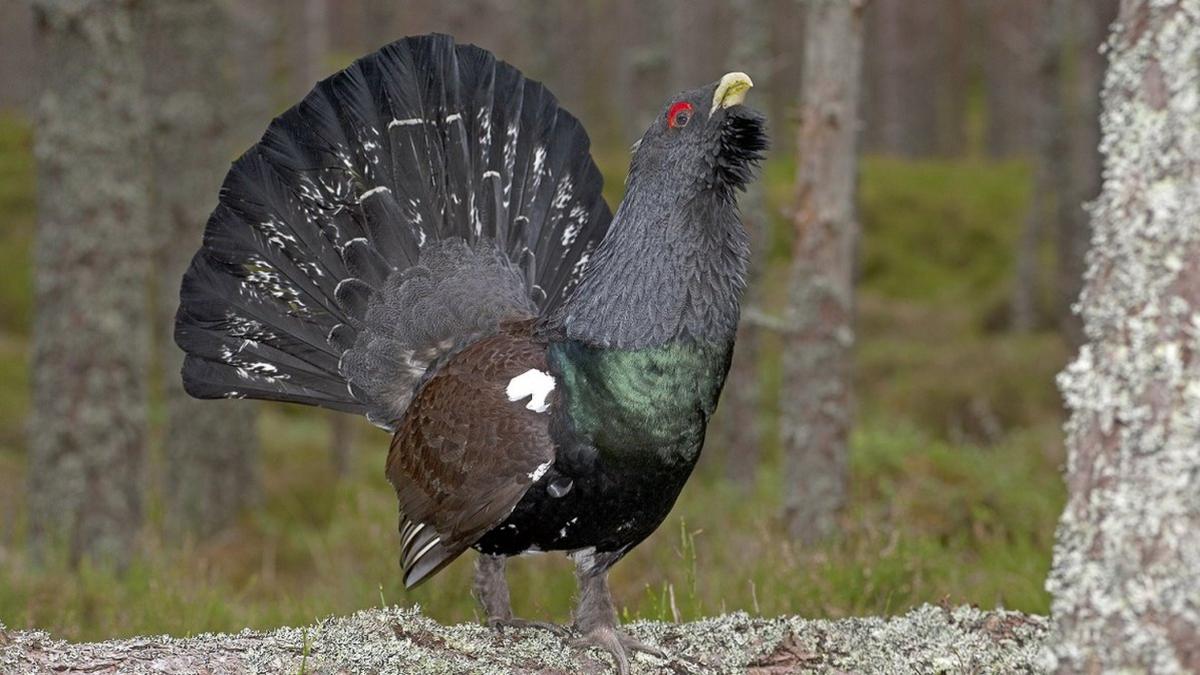Feathers offer clue to capercaillie's survival
- Published

Capercaillie are the world's largest grouse
Scientists have tested more than 800 feathers collected in the Cairngorms in an effort to extract the DNA of one of the UK's rarest birds.
There are estimated to be fewer than 1,000 capercaillie in the UK, all of them in Scotland.
A Royal Zoological Society of Scotland (RZSS) laboratory is running a DNA project, external as part of a wider conservation effort in the Cairngorms.
Scientists have been testing feathers gathered by volunteers.
The feathers were collected from the floors of pine forests inhabited by capercaillie, the world's largest grouse.
It can be difficult to distinguish the feathers of different birds by sight due to the effects of weather and age.
The RZSS WildGenes Laboratory's tests identified the feathers of golden eagles, buzzards, ring-necked pheasants and black grouse.

Golden eagle feathers were among the more than 800 tested
From the feathers that came from capercaillie, the scientists were able to determine the sex of the birds and to add new information to what was already known about the male-female ratio of the grouse in the Cairngorms.
The scientists next plan is to generate individual genetic profiles from each capercaillie feather.
Fatal collisions
Efforts to boost numbers of capercaillie in its Highlands stronghold recently received £2m in funding.
The Cairngorms Capercaillie Project will use the money from the National Lottery Heritage Fund to set up community-led conservation schemes.
Carrbridge, south of Inverness, is already piloting a community project.
It involves improving capercaillie habitat in pinewoods, raising awareness about how to avoid disturbing the birds and marking deer fences to make them more visible.
Capercaillie have been living in Scotland's pine forests since the last Ice Age.
Habitat loss and fatal collisions with deer fences have reduced their numbers.
- Published28 March 2018
